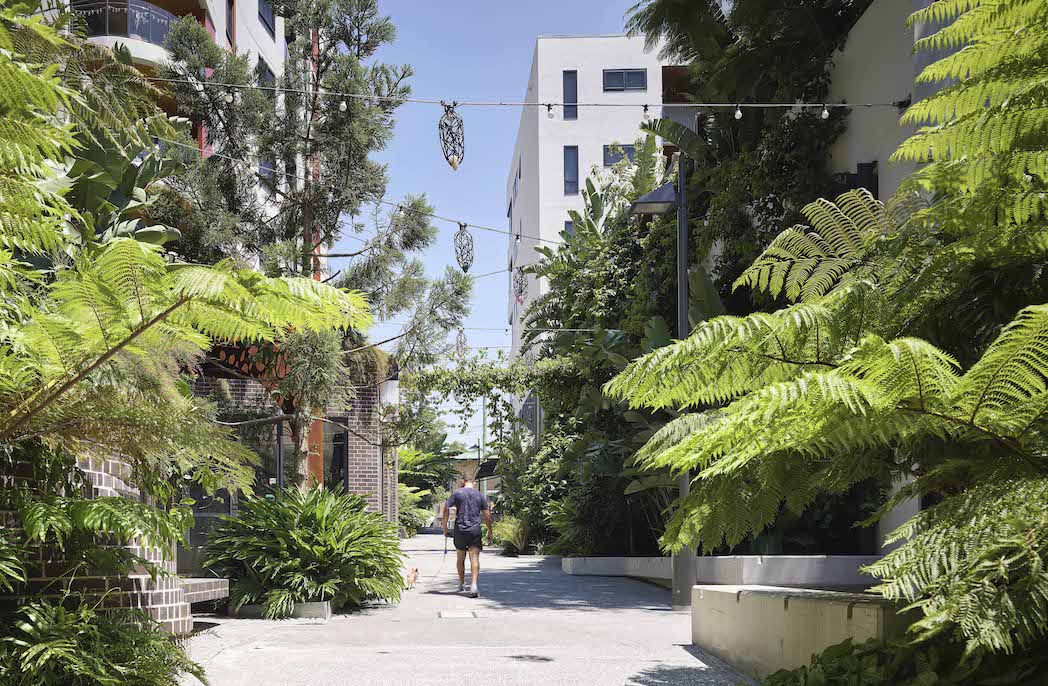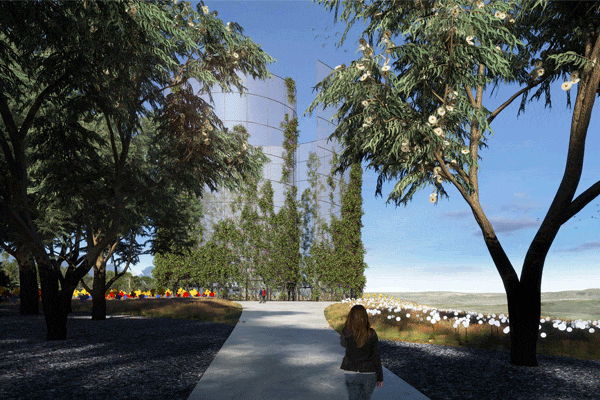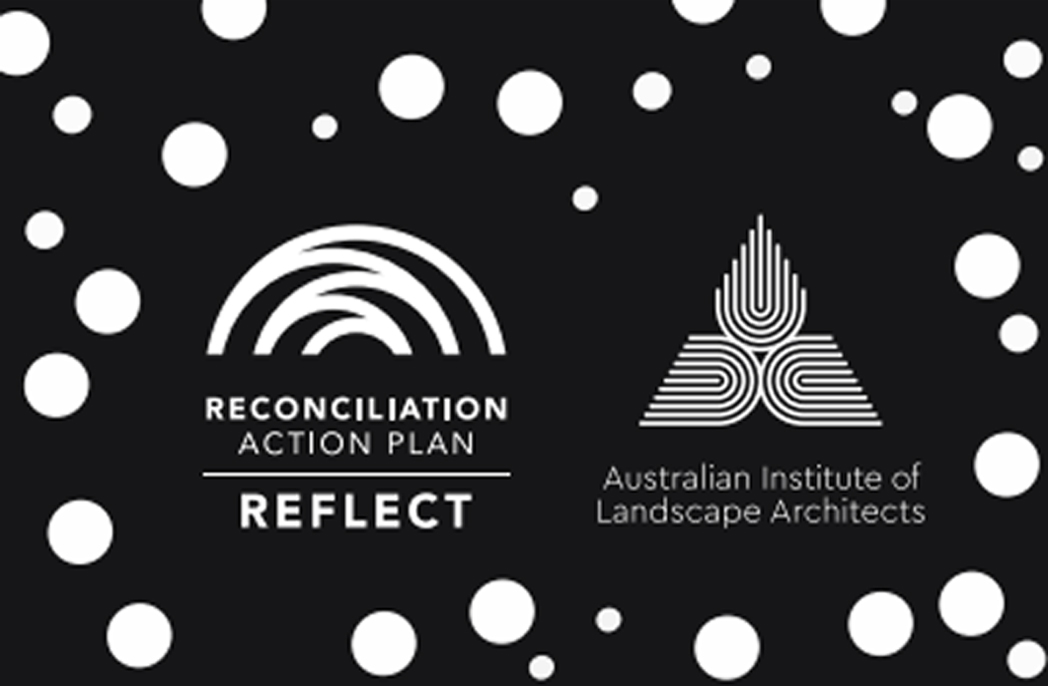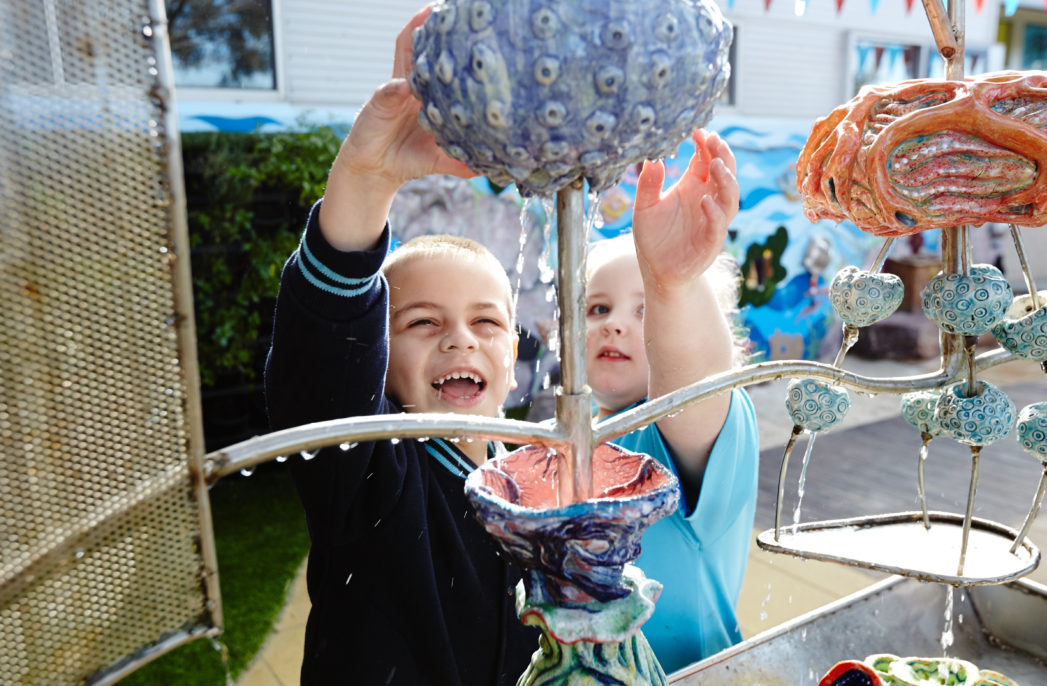
Meet the winners of The Future Park Design Ideas Competition
Meet the winners of The Future Park Design Ideas Competition
Share
The winners of The Future Park Design Ideas Competition were announced as part of the International Festival of Landscape Architecture held in Melbourne last week.
The competition challenged professional and emerging landscape architects, urban designers, architects and planners to speculate on new park possibilities for a future Melbourne, as well as answer the question: What is the role of the park in 2050?
The winning entry, The GAP, was headed by a team of professional architects and University of Melbourne landscape architecture students.

Winning entry ‘The GAP’ by Marti Fooks, Claire Winsor, Suhas Vasudeva and Jacqueline Heggli
Described as a “new landscape system that cuts through Melbourne’s urban form as a response to the world’s climate emergency”, the project is also a pointed commentary from designers Marti Fooks, Claire Winsor, Suhas Vasudeva and Jacqueline Heggli on the wage disparity between Australia’s men and women.
With the average weekly ordinary full time earnings siting 9.3 per cent apart as of November 2018, “The GAP seeks to restore balance… representing a moment in history, an awareness of inequality at a point of no return”.
The Gap is not a nuts-and-bolts plan to reconfigure the city’s parks in the near future, instead it’s a mindset and a movement, outlining its plans not to make profit or exclude anyone based on race, age, gender or ethnicity, but rather wrestle control from local governments and deliver it to people of Melbourne, who will “lead the occupation of a new landscape”.
In practical terms, it proposes to remove private cars from the area by 2030, convert streets into water systems and build new bus and train links, a complex pedestrian walkway and an underground road system. The community will be expected to plant 8,000 trees before 2050, when they will then be tasked with deciding whether to build more recreation and play facilities, install more green spaces and forests and invest in bio pools. In an almost dystopian footnote, the plans adds that “the (current) community living within The Gap will prepare for change and relocation”.

Joint second place winner ‘Parker Model’ by Alter Atlas Architecture
Joint second place for the Future Park prize was awarded to ‘Parker Model’ from Alter Atlas Architecture and ‘The NBN’ from Alexander Breedon, an Australian landscape architect based in China.
Atlas Architecture describes their project as a way to “realise the undeveloped potential of the existing buildings in the City of Melbourne… imagining a future where nature, climate change and public amenities are placed as top priority in our governmental budgets and on the forefront of our esteemed developers’ minds”.
The project sets out to build 3,859 hectares of parkland in the CBD without the need for new technology, while improving air quality and significantly reducing the urban heat island effect. It outlines the construction of new towers every day not for owner-occupiers or investors, but for the public in what it describes as “parks in the sky”.

Joint second place winner ‘The NBN’ by Alexander Breedon
Joint second place winner Alexander Breedon calls his project “a vision for an ecological project of continental reach and significance. Outrageously bold at over 60,000km it brings forward the question ‘Why is biodiversity not a national aspiration?’”
In his project, “The NBN” stands for the National Biodiversity Network and sets out to transform existing fossil fuel based infrastructure into “corridors” for playgrounds, ecological restoration, wildlife, sports facilities and examples of inclusive urbanism.
The competition was judged by University of Melbourne professors Jacky Bowring and Julia Czerniak, Victorian Government Architect Jill Garner, GHD Senior Urban Designer Mark Skiba, Australian businesswoman and philanthropist Dr Susan Alberti and landscape architect Reuben Hore-Waterhouse.
Winners of Future Park shared a prize pool of $20,000 and their work, alongside the other 28 shortlisted designs, is being exhibited until November 1 in the Melbourne School of Designs’ Dulux Gallery.
You Might also Like




















